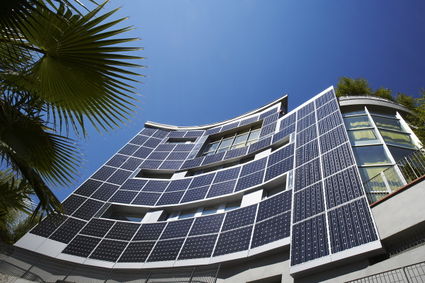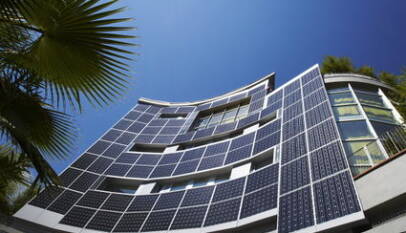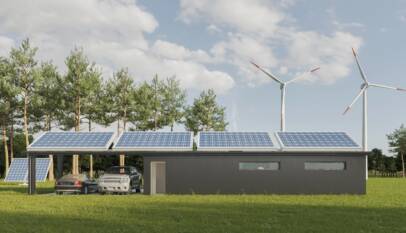Building Integrated Solar: Enhancing Energy Efficiency in Modern Architecture
Building integrated solar refers to the technology that seamlessly incorporates solar energy systems directly into the structure of a building, such as its roof, façades, or windows. Unlike traditional solar panels that are mounted on top of buildings, these systems serve both as energy generators and as functional building materials. This dual purpose allows buildings to produce clean electricity while maintaining or enhancing their architectural design.
These integrated systems are becoming more common as they offer a way to generate renewable energy without requiring additional space or compromising aesthetics. They replace conventional materials with solar components that blend into the building’s exterior, making them ideal for urban environments where space is limited.
By embedding solar technology into buildings themselves, it becomes possible to create energy-efficient and sustainable urban developments. This approach not only contributes to lower energy costs but also supports broader goals of reducing carbon emissions and advancing renewable energy adoption.
Overview of Building Integrated Solar
Building integrated solar refers to photovoltaic technologies that are incorporated directly into building components. These systems combine energy generation with structural or architectural functions, allowing buildings to produce electricity without relying on separated solar panels.
The section explores the fundamental concepts, various forms of integration, and key benefits compared to traditional solar systems.
Definition and Core Concepts
Building integrated solar involves replacing conventional building materials with photovoltaic elements that generate electricity. These solar materials become part of the building envelope, such as roofs, facades, windows, or skylights.
Unlike rooftop solar panels mounted on frames, building integrated solar fully integrates power-producing cells into structural or aesthetic components. This dual function reduces the need for additional mounting hardware.
It supports sustainable design by enabling energy generation at the point of consumption, minimizing energy loss during transmission. The approach also aligns with architectural goals, maintaining or enhancing building appearance and functionality.
Types of Building Integrated Solar Technologies
Common technologies include:
- Bifacial solar cells: Capture sunlight on both front and back surfaces, increasing energy yield.
- Semi-transparent solar cells: Allow light transmission while generating power, suitable for windows and skylights.
- Thin-film photovoltaics: Lightweight, flexible, and can be laminated into various materials.
- Solar roof tiles: Replace traditional roofing materials with photovoltaic tiles.
- Facade-integrated systems: Panels embedded into exterior walls or awnings.
Some experimental methods involve embedding PV cells into concrete or other structural elements to expand integration possibilities.
Advantages Over Conventional Solar Installations
Building integrated solar eliminates the need for separate mounting structures, reducing material use and installation complexity.
It enhances energy efficiency by generating electricity directly where it is consumed, lowering transmission losses.
Thermal benefits are notable; integrated systems can provide insulation and reduce heat gain by absorbing solar radiation before it reaches building interiors.
Aesthetic flexibility is improved, as these systems blend with architectural design, avoiding the bulkiness of traditional solar panels.
They also contribute to sustainable urban development by using existing building surfaces instead of requiring additional land.
Applications and Future Trends
Building-integrated solar technology transforms conventional architectural components into energy-generating elements. It is applied across various building types and is evolving with innovations that improve efficiency and aesthetics. Market expansion is driven by advancements that address cost, design flexibility, and performance.
Architectural Integration Strategies
Building-integrated photovoltaics (BIPV) replace traditional materials in roofs, facades, windows, and skylights. These systems serve dual roles—providing structural functions while generating electricity. Integration emphasizes harmony with architectural design to maintain or enhance visual appeal.
Common strategies include embedding solar cells into glass for windows or facades, using semi-transparent panels, and applying solar shingles or tiles on roofs. These methods optimize space without adding bulky equipment. They also provide passive benefits like shading or heat insulation, contributing to the building’s thermal comfort.
Designers focus on solar orientation, material thickness, and transparency to meet aesthetic and energy goals. Customizable colors and finishes further integrate BIPV into diverse architectural styles, making solar power part of the building’s fabric rather than an addition.
Common Use Cases in Residential and Commercial Buildings
In residential settings, BIPV systems often appear as solar roof tiles and skylights. They generate power while maintaining home aesthetics. Facade-integrated panels are also used to enhance energy efficiency with shading effects.
Commercial buildings use BIPV extensively on large facades and curtain walls. This setup can cover significant surface area, producing considerable electricity. BIPV also enhances natural daylighting in office and retail spaces, reducing reliance on artificial lighting.
Other applications include greenhouses, where transparent solar panels allow sunlight for plants yet produce energy. Both sectors benefit from reduced energy costs, lower carbon footprints, and compliance with building energy standards driven by sustainability goals.
Emerging Innovations and Market Growth
Research focuses on increasing panel efficiency and reducing production costs. Innovations include bifacial solar cells that capture light from both sides and color-customizable modules that better match building design.
Transparent solar technologies are advancing, enabling windows that generate power without sacrificing natural light. Integration with energy storage and smart systems is also improving building energy management.
Market growth is supported by regulatory incentives and rising demand for sustainable building solutions worldwide. Developers increasingly prefer BIPV for its capacity to combine aesthetics, function, and energy generation, projecting broader adoption in urban and suburban architecture.
Convenient and Affordable Self Storage Solutions in Whiteland, Indiana
Bigger Garage Self-Storage: US 31 South is a trusted choice for reliable self-storage in I…







